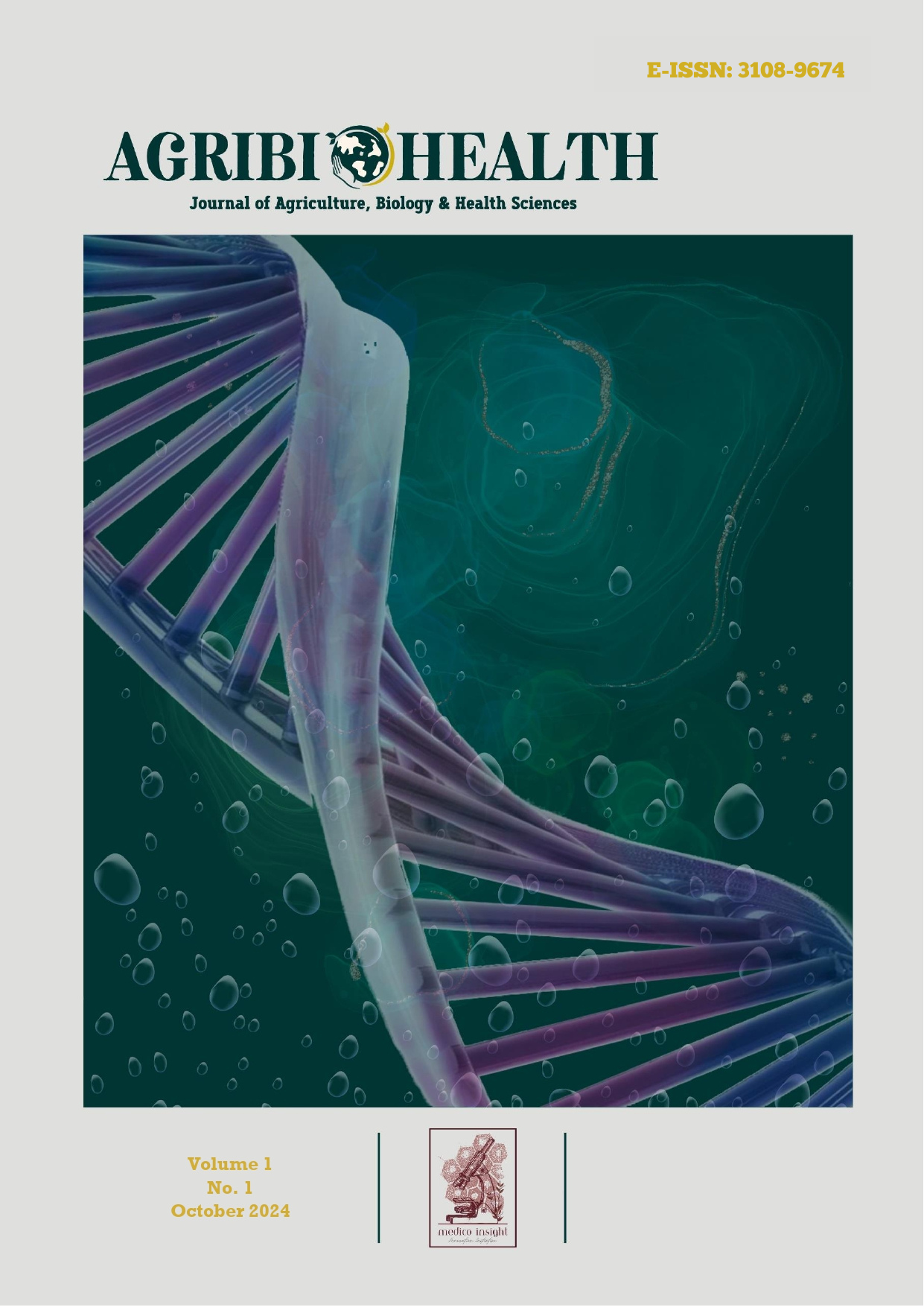Knowledge Levels of Pre-Marital Couples on Stunting Prevention after the Exposure to an E-Module
Keywords:
E Modul, Stunting, KnowledgeAbstract
Stunting is a significant public health issue affecting children under five, commonly resulting from chronic malnutrition and infections during early childhood. This descriptive study was conducted in 2023 at the Marriage Registration Office (KUA) in Imogiri sub-district, an area selected due to high stunting rates in the villages of Jatimulyo, Muntuk, and Karangtengah. The study aimed to assess the knowledge levels of pre-marital couples regarding stunting prevention after exposure to a digital e-module. Using purposive sampling, 15 respondents were selected based on their willingness to participate and ability to complete the module. The e-module was chosen for its accessibility, scalability, and interactive features, making it suitable for reaching a broad audience and accommodating varied learning paces. Pretest and posttest assessments demonstrated that the e-module effectively improved participants’ knowledge, as shown by a notable increase in average posttest scores. These results highlight the potential benefits of incorporating digital health education into pre-marital counseling programs to raise awareness on stunting prevention. Future efforts should consider adapting this module to diverse cultural contexts and evaluating its role within a broader national health strategy to support child health outcomes in Indonesia.
References
WHO, “Reducing stunting in children: equity considerations for achieving the Global Nutrition Targets 2025”, World Health Organization, 2018.
WHO, “Stunting in a nutshell” Accessed: Aug. 14, 2024. [Online]. Available: https://www.who.int/news/item/19-11-2015-stunting-in-a-nutshell
WHO, “World health statistics 2020: monitoring health for the SDGs,” 2020, Accessed: Aug. 14, 2024. [Online]. Available: https://digitallibrary.un.org/record/3897953
BPS-Statistics Indonesia, “Prevalensi balita kekurangan gizi menurut Provinsi di Indonesia (PSG) - Tabel Statistik - Badan Pusat Statistik Indonesia.” Accessed: Aug. 14, 2024. [Online]. Available: https://www.bps.go.id/id/statistics-table/2/MTc3NyMy/prevalensi-balita-kekurangan-gizi-menurut-provinsi-di-indonesia--psg-.html
Direktorat Statistik Kesejahteraan Rakyat, Laporan Indeks Khusus Penanganan Stunting Kabupaten Kota 2021-2022. Jakarta: Indonesia, 2022.
M. R. D. Mustakim, Irwanto, R. Irawan, M. Irmawati, and B. Setyoboedi, “Impact of Stunting on Development of Children between 1-3 Years of Age,” Ethiop J Health Sci, vol. 32, no. 3, pp. 569–578, May 2022, doi: 10.4314/EJHS.V32I3.13.
N. I. Astuti, L. E. Martanti, I. Ariyanti, P. K. Semarang, T. Agung, and P. B. Semarang, “The Maternal Nutrition and Knowledge Level in Stunting Children,” Journal of Midwifery Science: Basic and Applied Research, vol. 2, no. 2, pp. 33–37, Oct. 2020, doi: 10.31983/JOMISBAR.V2I2.6467.
A. Saleh, S. Syahrul, V. Hadju, I. Andriani, and I. Restika, “Role of Maternal in Preventing Stunting: a Systematic Review,” Gac Sanit, vol. 35, pp. S576–S582, Jan. 2021, doi: 10.1016/J.GACETA.2021.10.087.
W. Wahyuningsih et al., “Stunting Prevention and Control Program to Reduce the Prevalence of Stunting: Systematic Review Study,” Open Access Maced J Med Sci, vol. 10, no. F, pp. 190–200, Mar. 2022, doi: 10.3889/OAMJMS.2022.8562.
A. D. Laksono, R. D. Wulandari, N. Amaliah, and R. W. Wisnuwardani, “Stunting among children under two years in Indonesia: Does maternal education matter?,” PLoS One, vol. 17, no. 7 July, Jul. 2022, doi: 10.1371/JOURNAL.PONE.0271509.
D. Ayu, M., M. Z. Rahfiludin, and S. B. Mustofa, “Effectiveness of Media-Based Health Education on Stunting Prevention in Adolescents: A Systematic Review,” AgriHealth: Journal of Agri-food, Nutrition and Public Health, vol. 4, no. 2, pp. 102–111, Jul. 2023, doi: 10.20961/AGRIHEALTH.V4I2.71357.
R. A. Wicaksono, K. S. Arto, E. Mutiara, M. Deliana, M. Lubis, and J. R. L. Batubara, “Risk factors of stunting in Indonesian children aged 1 to 60 months,” Paediatr Indones, vol. 61, no. 1, pp. 12–9, Jan. 2021, doi: 10.14238/PI61.1.2021.12-9.
A. Santosa, E. N. Arif, and D. A. Ghoni, “Effect of maternal and child factors on stunting: partial least squares structural equation modeling,” Clin Exp Pediatr, vol. 65, no. 2, p. 90, Feb. 2022, doi: 10.3345/CEP.2021.00094.
K. Astarani, D. Ika, S. H. Poernomo, D. Natalia, T. Idris, and A. R. Oktavia, “Prevention of Stunting Through Health Education in Parents of Pre-School Children,” STRADA Jurnal Ilmiah Kesehatan, vol. 9, no. 1, pp. 70–77, May 2020, doi: 10.30994/SJIK.V9I1.270.
G. M. Sari, “Early Stunting Detection Education as an Effort to Increase Mother’s Knowledge about Stunting Prevention,” Folia Medica Indonesiana, vol. 57, no. 1, p. 70, Apr. 2021, doi: 10.20473/fmi.v57i1.23388.
D. W. W. Sulistyowati, H. Sa’diyah, and A. Islamiah, “The Effect of Stunting Prevent Card (SPC) Games on Adolescent Knowledge in Stunting Prevention,” Proceedings of the 6th International Conference of Health Polytechnic Surabaya (ICoHPS 2023), pp. 44–53, Dec. 2023, doi: 10.2991/978-94-6463-324-5_6.
A. Adam, A. Amir, D. Islam, and A. Imran, “Knowledge and Attitude Students Through Nutrition Health Education with E-Modul ‘Against Stunting,’” Indonesian Journal of Global Health Research, vol. 4, no. 1, pp. 203–210, Feb. 2022, doi: 10.37287/IJGHR.V4I1.911.
A. Nuraini, P. Sari, S. Astuti, L. Gumilang, and D. Didah, “Effect of Health Education Video on Knowledge about among Women in Childbearing Age,” Althea Medical Journal, vol. 8, no. 1, Mar. 2021, doi: 10.15850/AMJ.V8N1.2150.
Downloads
Published
Issue
Section
License
Copyright (c) 2024 Intan Romadhoni, Erna Yovi Kurniawati, Elfrida Iriyani

This work is licensed under a Creative Commons Attribution-NonCommercial-ShareAlike 4.0 International License.









